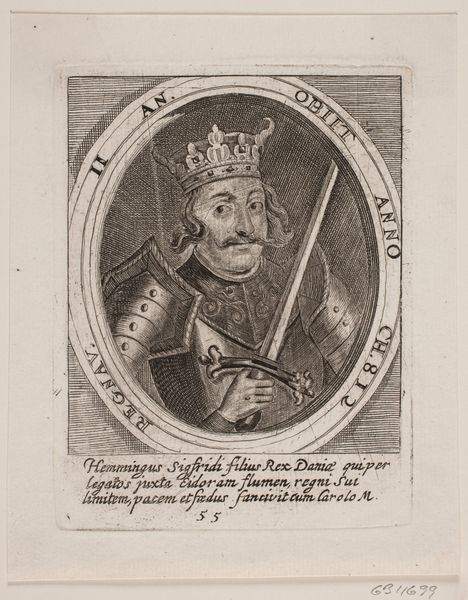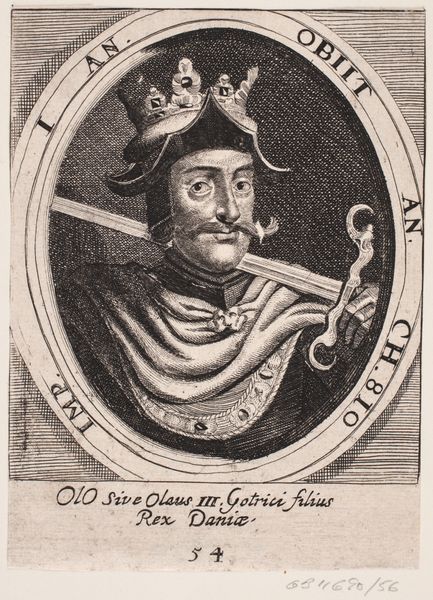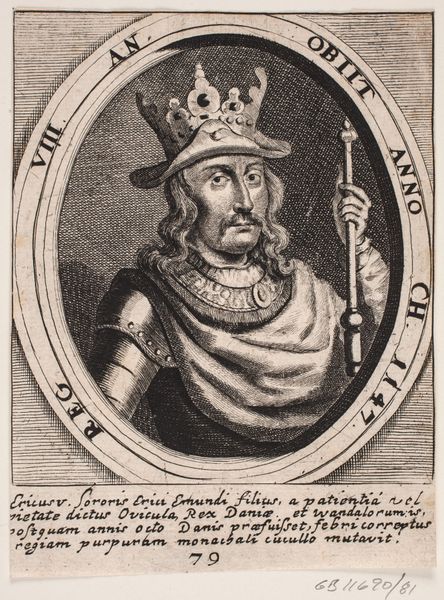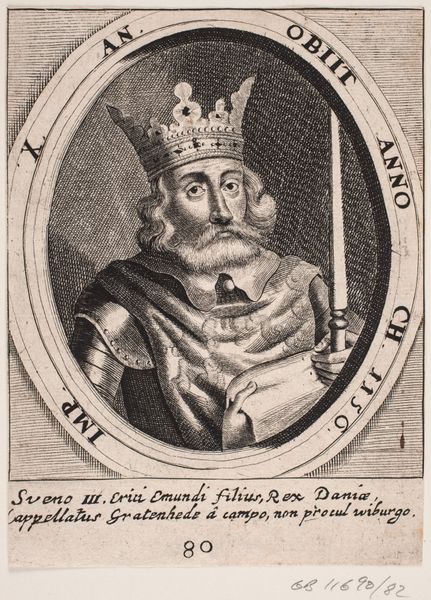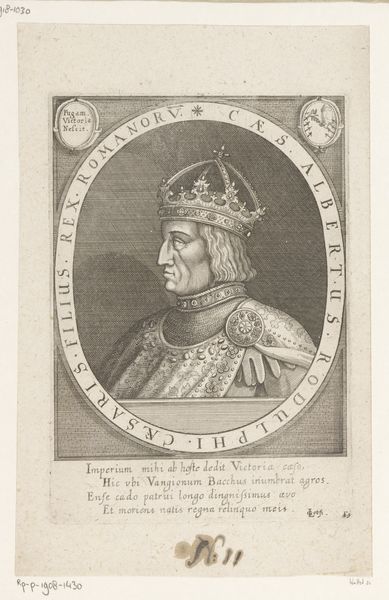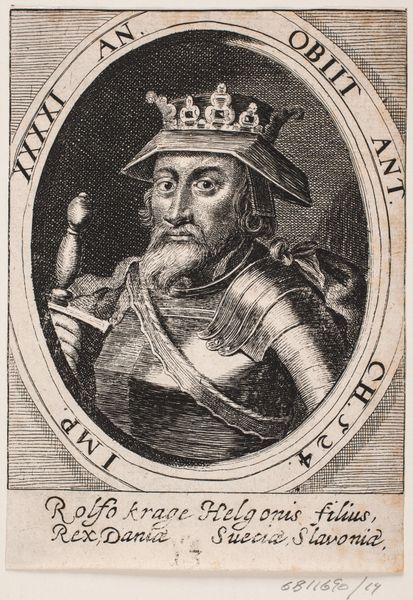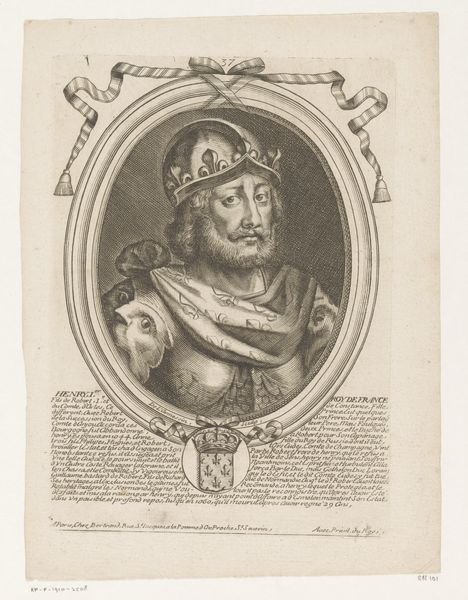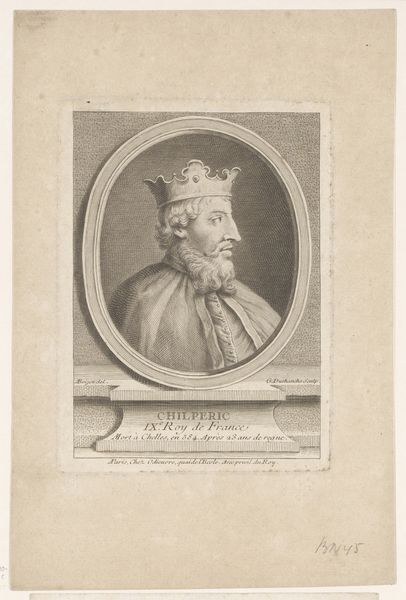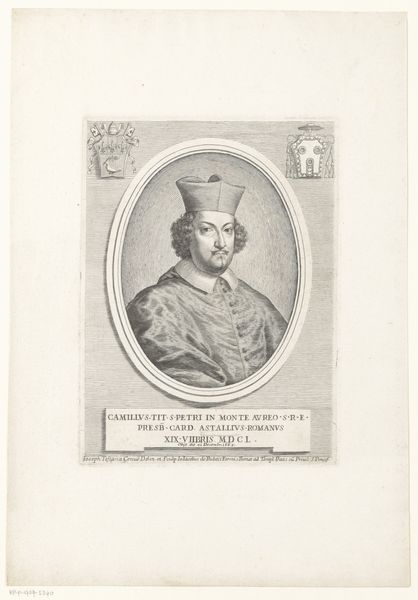
print, engraving
#
portrait
#
baroque
# print
#
old engraving style
#
history-painting
#
engraving
Dimensions: 139 mm (height) x 110 mm (width) (plademaal)
Curator: This is a 1646 print titled "Kong Oluf III," created by an anonymous artist. The medium is engraving. It's held here at the SMK, Statens Museum for Kunst. Editor: The figure projects an aura of austere authority, but the somewhat crude, almost shaky linework gives it an earthy quality too. It's clearly meant to be stately, but somehow feels folk-ish to my eye. Curator: Consider the social context. Prints at this time functioned as relatively affordable, reproducible images, making portraits like these more accessible than painted versions for, say, the rising merchant class or provincial gentry. So while Oluf might be depicted as powerful and divine through conventional iconography, it’s being disseminated through an emergent, almost industrial, image culture. Editor: Right, the crown, the sword, the scepter – those are the explicit symbols of power. But the oval framing and inscriptions create a kind of numismatic quality, turning Oluf into a coin-like icon. Note the inscription mentioning his death anno 810—casting the king's image as historical, mythic even. It adds layers of complexity. Curator: Absolutely. And how that historical memory gets packaged for consumption. Engravings like this involved workshops, distribution networks, and a whole economy of production—paper, ink, the engraver's labor, and ultimately its reception by a broad public audience, something absent in an oil painting, for instance. Editor: There's almost a flattening of historical depth, compressing layers of meaning into something immediately recognizable, even timeless. This is more than just a portrait. It aims to fix a figure and ideal for posterity using a few well-chosen, instantly recognizable symbolic keys. Curator: The tension between the hand-made, laborious process of engraving and the intended aura of regal permanence makes this particularly interesting to me. It is a great example of production and reproduction in early modern portraiture. Editor: A fascinating image to untangle; a perfect dance of visual echoes through the corridors of cultural memory, transformed via the printing press. Curator: Indeed; a striking lens through which to consider the making and meaning of power.
Comments
No comments
Be the first to comment and join the conversation on the ultimate creative platform.
